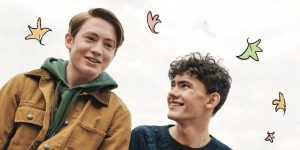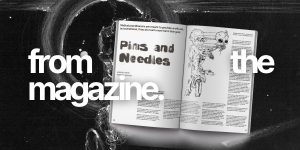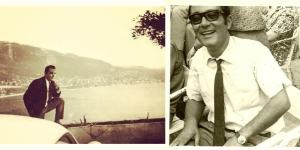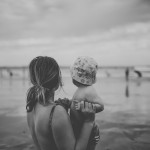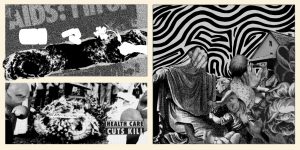Queer paranormal phenomena: Metaphysically speaking
By: Ken Summers
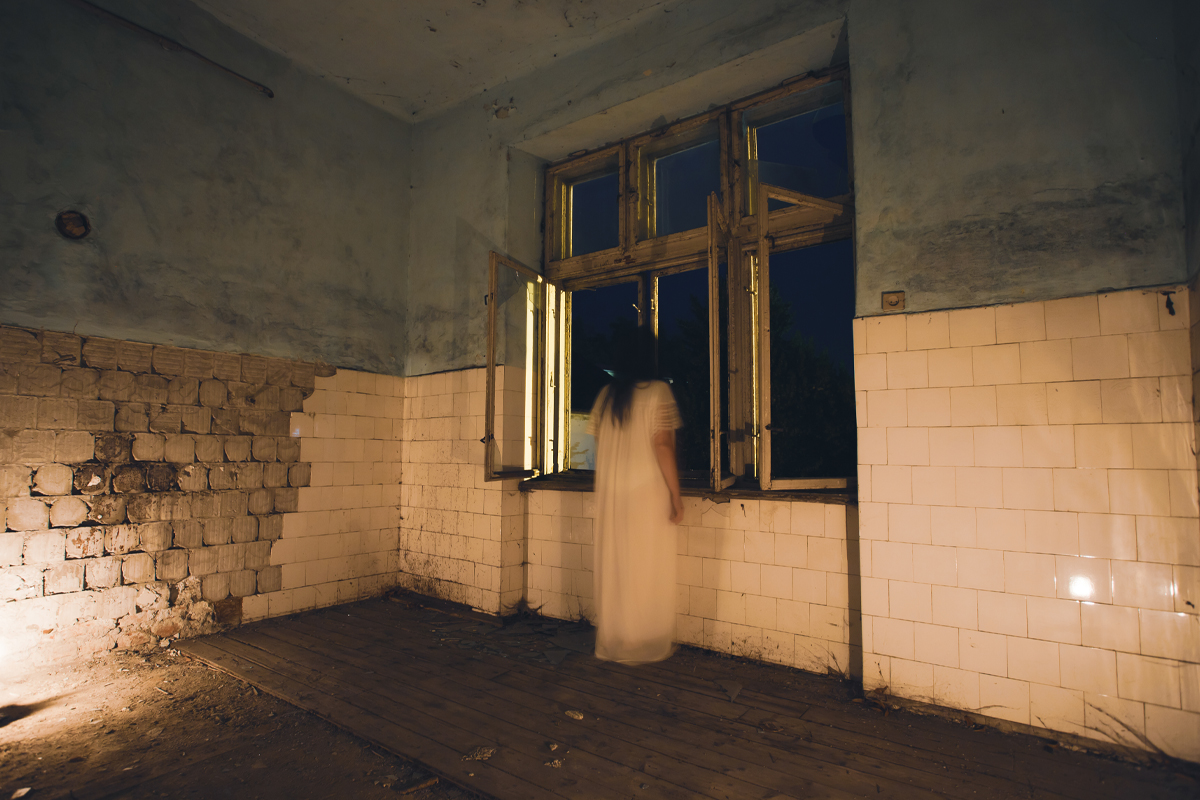
Content warning: This article discusses death, murder, violence and hate crimes against LGBTQIA+ people.
Most things in life can’t be taken for granted. Weather fluctuates. Workplaces and living arrangements change. Lovers come and go. But one thing is for certain: eventually, we all will die.
Such a morbid thought, isn’t it? Not necessarily.
If you believe in an afterlife, death doesn’t truly signify the end. And even if you don’t subscribe to any mythos relating to a higher power, compelling tales of visitations from the departed combined with the very human desire to seek meaning in the mundane might lead one’s mind to wander.
The vast landscape of what we refer to as ghostly phenomena is an ancient trope without any cultural boundaries. Eternal love, unfinished business, time-locked tragedies, revenge, or any number of rationales are the fundamental human mechanisms behind these stories.
But once you add queerness into the mix, it becomes a solo venture into unexplored territory.
I’m not just talking about living life as an out gay paranormal researcher. I’m talking about queerness among the dearly departed. And it’s not mere speculation on my part.
For the last two decades, I’ve spent most of my time researching just that. What began as an attempt to reconcile my passion for unexplained phenomena with my drive to explore queer history resulted in a unique, unprecedented specialisation in queer paranormal history and lore.
Long before notions of gender and sexuality even registered in my head, I grew up with a deep fascination with nature and the rare opportunity to live close to both forgotten and revived history.
I would walk along the remnants of an old canal system several miles south of Cleveland, Ohio, and see the traces of bustling infrastructure reduced to rubble.
On the opposite side of the river, a restored steam locomotive hauled passengers on excursions; I could hear its whistle from my bedroom window and hurry down to the tracks to watch the iron horse spewing coal smoke as it glided along the rails with its mesmerising movements.
And just a stone’s throw away sat a creepy mostly abandoned town swirling with spooky stories and fantastic urban legends. It was a regular conversation piece for my classmates; though known then by many other names, today it is infamous across the internet as Helltown.
Back then, it was a labyrinth of crumbling houses, random derelict vehicles and toxic waste. Its modern cleaned-up version is less creepy, more inhabited.
Like most 20th century paranormal enthusiasts, I turned to books to find out about the unexplained. This was a time before Google searches and mainstream paranormal television.
Not only did my reading material consist of collections of ghostly tales, but I developed a fascination with the field of parapsychology – the serious study of paranormal and psychical phenomena.
There were no ghosthunting tool kits or fanciful gadgets, only applied techniques and observations.
As I entered my later teenage years, I went from armchair scholar to explorer and began visiting rumored locations within a few hours’ drive of home. I joined a few paranormal organisations (and even started my own short-lived group) and regularly spent late nights in strange places, hoping to catch a glimpse of something impossible.
But I was living a double life.
I was a paranormal investigator among certain conservative, quasi-religious circles while splitting my time in a nearby city at gay bars and attending queer events with a very different set of friends.
Opportunities to blend those two worlds were few, and I quickly learned that taking a boyfriend on his first supernatural adventure would soon become his last.
These two sides of my life stayed separate for many years until the day I finally asked myself, “Why don’t we ever hear about gay or lesbian ghosts? Surely these stories must exist?”
I set out to find a few such stories and began to slowly find some, which I wrote about in my blog. Eventually, I had amassed enough of them to turn into a book: Queer Hauntings: True Tales of Gay & Lesbian Ghosts, published in 2009. It was the first book ever written of its kind.
Even while spreading the word about my book, giving a book signing in Salem, Massachusetts, and having lunch with two lesbian fans on the Australian shore at Wollongong, I was continuing and expanding my research in this increasingly niche field.
Paranormal programs and podcasts were in full bloom all around. While many were sowing their celebrity roots, I was harvesting the rarest of historical tidbits and squirreling away a vast research library of materials.
I was – and still am – a unicorn within paranormal circles. Combining two taboo subjects (queerness and the paranormal) into one discipline is not only daunting but sounds next to impossible. Parallels between these two worlds are not readily apparent; the painstaking research required can be exhausting yet rewarding.
Queerness has long been hidden in plain sight throughout the spectrum of supernatural experience. One only needs to pierce the veil a little deeper to uncover the pink underbelly of diversity beating within the heart of anomalous and unexplained phenomena.
It may sound bizarre to the disbeliever, or even the ghost story junkie, but there are more than a few tales of spirits who obviously aren’t heterosexual in their… how should I say it, afterlifestyle?
Such ghost stories are seldom mentioned on television or in books, and in the rare instances they receive a bit of limelight, any inkling about a spirit or ghost being LGBTQ+ is generally omitted.
Interestingly enough, there are plenty of reports of queer paranormal experiences.
At one pub in England, a female specter is believed to pinch staff members of the same sex on the rear. Elsewhere in the country, men working at an inn have reported their pants being unzipped by what has been identified as the ghost of a former male employee.
While these are not common tales, they do show us that there might be some cases of gay and lesbian ghosts in which sexuality is not limited to the physical body.
Unfortunately, not all queer ghost stories are lighthearted in nature. Our history is filled with tragedy and wrongdoing, which is reflected in other stories from around the world.
A legend exists from construction of the Great Western Highway near Parramatta, New South Wales, of a convict murdered by his lover who rose from the dead before a group of onlookers to scare his former partner to death.
Ghosts of gay literary greats, Truman Capote and Tennessee Williams, drown their sorrows in the French Quarter of New Orleans, while echoes linger not far away from those who lost their lives in the tragic Upstairs Lounge arson fire.
A shadowy Romani girl in the British Isles is said to return to the site of her tryst with an innkeeper’s daughter, for which she paid the ultimate price at his hands. And in the Philippines, a trans performer once beaten and left for dead in Manila is reported to hail taxis in a futile attempt to seek medical assistance from a hospital.
These are merely a taste of the stories I’ve uncovered in my research.
The influences of queerness in the supernatural extend far beyond ghosts and goblins too. My decade-long journey into these deeper depths was realised last year in publishing Weirdly Queer: Exploring the LGBTQ Perspective of the Paranormal, Occult, and Mysterious World (2023).
The history of psychical research, ufology (the study of UFOs), and even cryptozoology (the study of unknown and legendary animals) is littered with queer investigators and non-heteronormative undertones.
The 1965 paperback No End to the Way – the first Australian novel depicting gay characters from their own perspective – was written by Gerald Glaskin under a pseudonym, yet the author went on to write a series of books on his “Christos method” experiments with past life regression.
At a Bigfoot conference in Ohio, famed cryptozoologist Loren Coleman dared to ask a most blatantly obvious question regarding the elusive hominid: if a sasquatch is a real biological creature, could it, like so many other creatures in the animal kingdom, express homosexual tendencies?
Even the first writings on the “Men in Black”, which inspired both the graphic novel and film franchise, were penned by gay author Gray Barker.
The world of the occult has long been a haven for queer peoples.
Witchcraft, for example, has a history of queer origins. In the 20th century, its unorthodox approach to spirituality and the fabric of the universe attracted the likes of Aleister Crowley with his bisexual sex magick, and Greenwich Village’s self-proclaimed “Gay Witch” Leo Martello at the height of the Gay Rights Movement in ’70s New York City.
In 1936, while in Haiti researching for her book Tell My Horse, Zora Neale Thurston encountered the many layers of queerness within Vodou and its religious iconography.
Here in the 21st century, there are people who remain uncomfortable around LGBTQ+ individuals, let alone the idea of being in a room with an inexplicable, queer entity. However, great progress has been made in the past two decades, and opportunities which had previously failed as concepts have sprung forth into the light.
Paranormal author Antonio R. Garcez published his own collection of firsthand queer ghost stories. YouTube saw the creation of the Queer Ghost Hunters web series. And just last year in 2023, a diverse cast of queer characters took to the road across America for the Hulu series Living for the Dead.
Acceptance of the broader diversity within the paranormal is finally being seen.
Unlike the would-be ghost hunter of social media who keeps the camera trained directly on themselves instead of searching for evidence, my purpose in my writings and work is to shine a spotlight on those forgotten by time.
I still find some level of discomfort in being called an ‘expert’ in the field. Like a modern queer Charles Fort, I am but a collector of fringe stories and peculiar biographies. Those I write about are the real main characters; I’m merely the narrator. But to give a voice to histories forgotten is a rewarding opportunity.
Whether directly or indirectly, every person deals with grief, loss, murders, crime, chance and coincidence, love, heartache, accidents, and the many other plots at the centre of most paranormal activity.
We tend to point out our differences more than our similarities as human beings. But once we’re six feet under, we’re all the same pile of dust and bones. And paranormal topics are often misunderstood, feared, and vilified – just like many in the queer community.
It’s easy to see why we have been a part of paranormal subjects for centuries. Remembering these forgotten souls and their contribution to both the folklore and research is an important part of our story to which I am honored to be a contributor.



